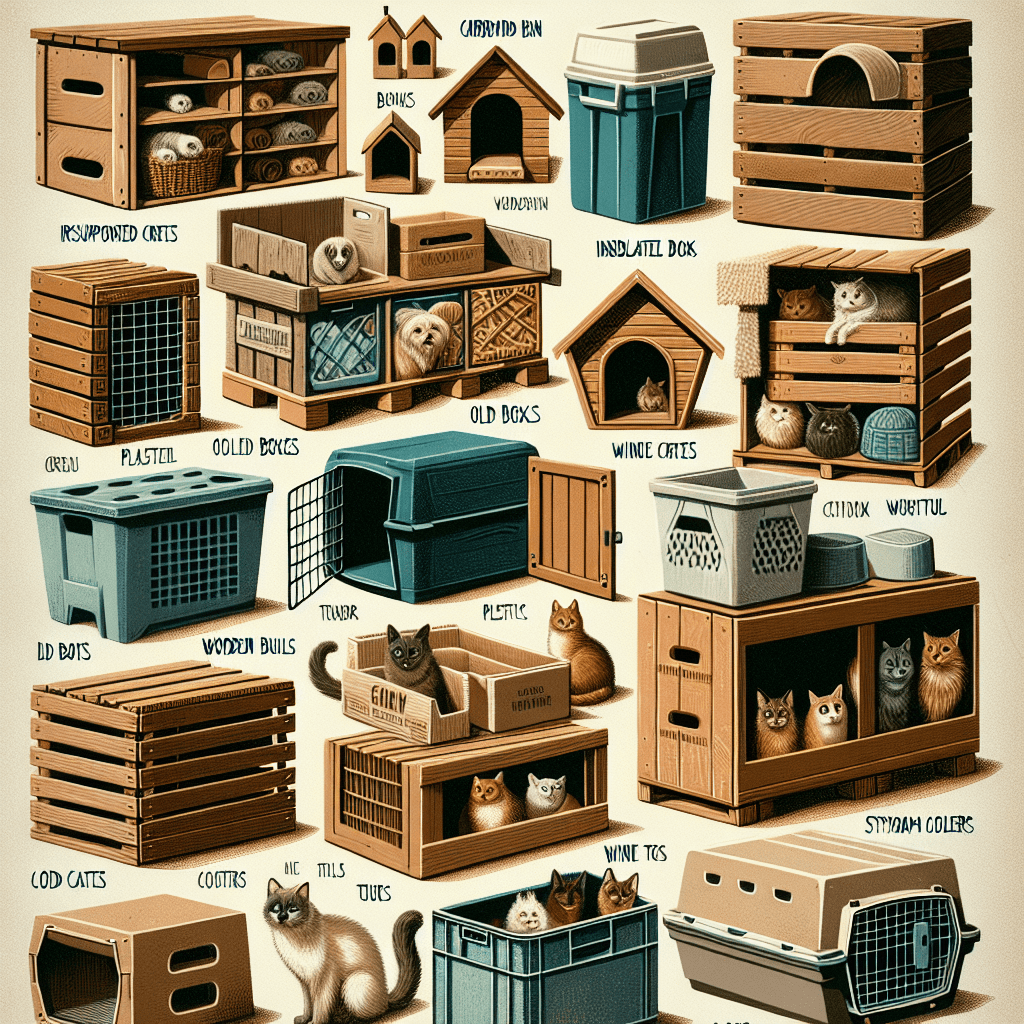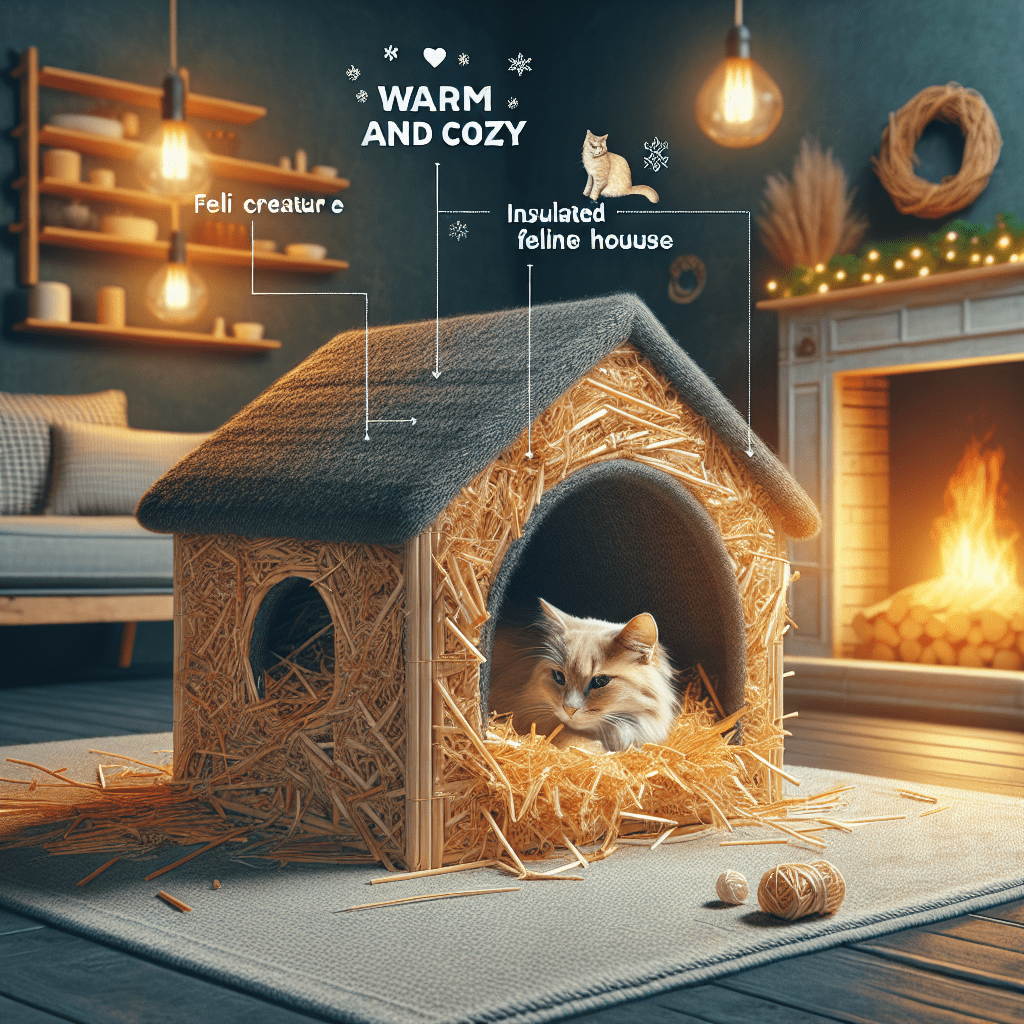Winter poses a chilly challenge, especially for barn cats weathering the frosty elements outdoors. These tough little warriors require additional TLC to remain snug and healthy during the cold months. Whether you’re a doting pet parent, a devoted animal enthusiast, or a savvy homesteader, grasping the winter needs of barn cats is key. Dive into this guide for hands-on advice and insights to keep your barn cats cozy all winter.
Table of Contents
Why Keeping Barn Cats Warm Matters
Barn cats are awesome at keeping pesky rodents in check. But come winter, things get tough for these hardworking kitties. Chilly weather can cause serious health problems, like hypothermia and frostbite. Making sure your barn cats stay warm is super important for their comfort and health and for keeping them on top of their rodent-catching game.
Understanding the Needs of a Barn Cat
Barn cats differ from indoor cats in several ways, particularly regarding their shelter and warmth requirements. Unlike indoor cats, which have the luxury of a heated home, barn cats rely on their environment to provide the warmth they need.
Shelter and Warmth Requirements
Barn cats need a cozy spot that’s dry and free from drafts to shield them from the weather. They need their shelter to be insulated so it stays warm and toasty, making it the perfect place for them to snuggle up. And remember, it’s super important to keep the shelter off the ground to prevent moisture from creeping in.
Adaptability and Resilience
While barn cats are generally more adaptable and resilient than their indoor counterparts, they still require human intervention to stay warm in extreme weather. Providing additional sources of warmth and ensuring access to adequate shelter will help them thrive.
Tips for Keeping Barn Cats Cozy in Winter
- Create a Warm Shelter: Ensure your barn cats access a warm, insulated shelter. Use materials like straw for bedding because it retains heat well and remains relatively dry. Also, consider using thermal blankets for additional warmth.
- Elevate the Shelter: Raise the shelter off the ground to prevent dampness and cold from seeping in. A wooden pallet or an old table can work well to elevate the structure.
- Wind Barrier: Place the shelter in a location shielded from prevailing winds. This can help retain heat and prevent cold drafts from entering.
- Use Heated Mats or Beds: Invest in heated pet mats or beds designed for outdoor use. These provide consistent warmth and built-in safety features to prevent any fire risk.
- Regular Insulation Checks: Regularly check the insulation of the shelter to ensure it remains effective. Straw can become compacted over time and may need to be replaced.
- Supply High-Calorie Food: Feeding your barn cats high-calorie, high-protein food helps them maintain their body heat. Wet food is especially beneficial during winter as it contains moisture and is easier for them to digest.
- Provide Fresh Water: Always provide fresh, unfrozen water. Heated water bowls are an excellent option to prevent water from freezing, ensuring that your cats stay hydrated.
- Monitor Health Regularly: Pay close attention to your barn cats’ health by checking them twice daily. Look for any signs of hypothermia or frostbite and take immediate action if needed.
- Draft-Proof Shelters: Ensure there are no gaps or openings in the shelter that could let in cold air. Sealing these gaps contributes to retaining warmth inside the shelter.
- Grooming Maintenance: Keep your cats well-groomed, as matted fur can reduce its insulating properties. Regular brushing helps maintain a healthy, warm coat.

Shelter Ideas for Barn Cats
Creating a warm and dry shelter for your barn cats is one of the most important steps to protect them during winter. Here are some detailed suggestions to get you started.
DIY Shelter Options
If you’re into getting your hands dirty, putting together a DIY shelter can be a super rewarding project. Grab some wood, insulation foam, and straw to craft a cozy spot. Just ensure the entrance is small enough to keep the big critters out but big enough for your cat to slip in comfortably.
Off-the-Shelf Alternatives
If DIY isn’t your thing, plenty of pre-made shelters are available on the market. Look for ones that are well-insulated and explicitly designed for outdoor cats. Some even come with heating pads to provide extra warmth.
Insulation and Bedding
Proper insulation is key regardless of whether you build or buy a shelter. Use materials like straw or thermal blankets to line the shelter. Avoid using towels or newspapers, as they retain moisture and dampen the shelter.

Feeding Tips for Winter
Feeding your barn cats the right food in the right way can help them maintain their body heat during winter. Here’s how to adjust their feeding routines and types of food to support their health.
High-Calorie Diet
Did you know cats burn more calories when it’s cold to keep themselves warm? Giving them a high-calorie diet can keep their energy up. Think about adding some wet food to their meals. It’s got more moisture and is easier for them to digest.
Frequent Feeding
Offer food more frequently throughout the day. This ensures your cats have a steady supply of energy to keep warm. If possible, provide fresh water at each feeding to prevent dehydration.
Warm Water Supply
Regularly check your cat’s water dish to ensure it hasn’t frozen over. Use heated bowls to keep the water from freezing, or place the bowl in a sheltered area to reduce the risk of ice forming.
Health Considerations for Barn Cats in Winter
Winter brings specific health risks for barn cats, including hypothermia and frostbite. Knowing the signs of these conditions and how to prevent them is crucial for keeping your cats healthy.
Recognizing Hypothermia
Hypothermia occurs when a cat’s body temperature drops below normal. Signs include shivering, lethargy, and pale or blue gums. If you suspect your cat has hypothermia, bring them inside immediately and warm them up slowly using blankets and water bottles.
Identifying Frostbite
Frostbite usually affects a cat’s ears, paws, and tail first. Look for skin that looks pale and feels hard. If you spot any signs of frostbite, warm the affected spots with warm (not hot!) water and get to a vet ASAP.
Preventive Measures
The best way to prevent hypothermia and frostbite is by providing adequate shelter and monitoring your cats regularly. Ensure their shelter is well-insulated and dry, and check on them frequently during cold spells to ensure they’re staying warm.
Conclusion
Hey there! Keeping your barn cats warm and snug during those cold winter months is key for their health and happiness. It’s all about figuring out what they need, setting up a cozy shelter, tweaking their diet a bit, and keeping a close eye on their health to make sure they’re still feeling top-notch even when it’s super cold outside.
Do you have any excellent tips or stories about how you keep your barn cats happy during winter? I’d love to hear them in the comments! And hey, remember to smash that subscribe button for more awesome pet care and animal husbandry tips. Let’s create an amazing community of pet owners who go the extra mile for their furry pals.
Frequently Asked Questions (FAQ)
How often should I check on my barn cats during winter?
It’s a good idea to check on your barn cats at least twice a day during winter. This ensures that their shelter remains dry and warm, their food and water supply is adequate, and they are in good health.
What are the best types of bedding for barn cat shelters?
Straw is a great pick for bedding since it keeps things warm and dry. Thermal blankets can be a big help, too. You might want to skip using towels or newspapers, though – they tend to hold onto moisture and can get damp, leaving your cats feeling chilly.
Can I use a regular space heater in the barn to keep my cats warm?
Using a regular space heater can be risky due to the potential for fires and injuries. Instead, consider using heated pet mats or beds designed for outdoor use with built-in safety features.
What should I do if my cat shows signs of hypothermia or frostbite?
If you suspect your cat has hypothermia or frostbite, bring it indoors immediately and warm it slowly using blankets and warm (not hot) water bottles. Then, seek veterinary care as soon as possible for proper treatment.
Is it okay to feed barn cats human food during winter?
You should go for high-calorie, high-protein cat food that meets all their nutritional needs. Human food just doesn’t cut it and can cause health problems. Wet food is a game-changer in winter; it’s got more moisture and is a breeze to digest.
Should I continue providing fresh water even if it’s cold outside?
Yes, providing fresh water at all times, even during winter, is crucial. To prevent the water from freezing, use heated water bowls or place the dish in a sheltered area. Also, regularly check to ensure the water is not frozen.
How can I tell if my barn cat’s shelter is adequately insulated?
An adequately insulated shelter should retain warmth and stay dry inside. Use straw or thermal blankets for insulation, and check regularly to ensure no drafts or moisture are present. Raising the shelter off the ground also helps in keeping it warm.
Can indoor cats adapt to being barn cats during winter?
Switching your indoor cat to a barn cat life, especially in the winter, can be challenging. If you have to do it, try to take it slow. Please make sure there are cozy spots for them to snuggle up in, and keep a close eye on how they’re adjusting. Sometimes, it’s wiser to wait for the weather to warm up a bit before making the switch.
I hope these tips help you care for your barn cats this winter. Do you have more questions? Comment below!
Sarah Smith is a passionate dog and cat enthusiast, blogger, and pet care expert. With years of experience researching and writing about various dog breeds cat breeds, she brings a wealth of knowledge and insight to her blog, PetPession.com. Sarah loves exploring the unique traits, histories, and care needs of different breeds, helping pet owners make informed decisions. Her mission is to create helpful, friendly, and well-researched content that both educates and celebrates the joy of pet ownership. When she’s not writing, Sarah enjoys outdoor adventures with her own furry friends.


1 thought on “Keep Your Barn Cats Warm: Top Winter Care Tips”